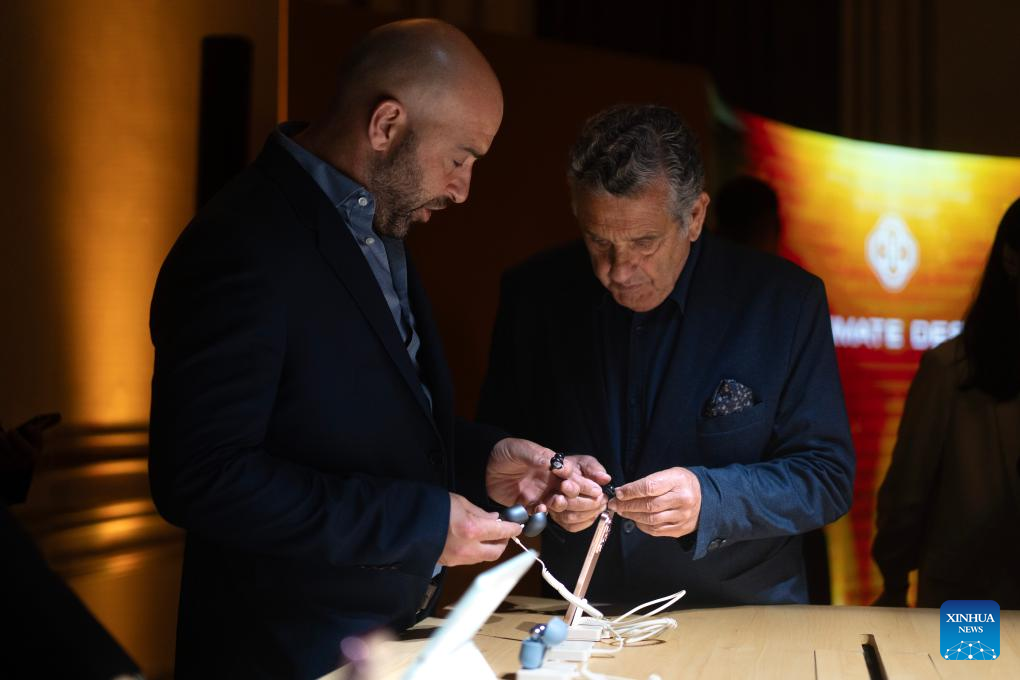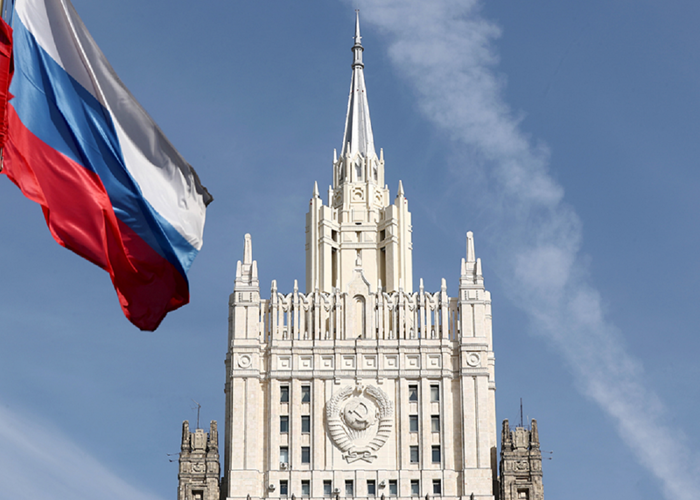|
|
TODAY.AZ / Analytics
Stability in the South Caucasus versus short term gains
27 May 2010 [11:25] - TODAY.AZ
 Stability is one of the most significant ingredients to the success of nations, regions and the global community in the modern age. No longer can nations prosper as individual entities, shielded from the politics, economics and social events of other nations. The recent financial meltdown of Greece is a good example of how one nation's fiscal mismanagement can direly affect other nations throughout the world. The impact of Greece's difficulties on the US stock market a few weeks ago perfectly illustrates this. Unfortunately, many nations and their leaders have yet to come to this realization, even when faced with blatant and obvious evidence.
Stability is one of the most significant ingredients to the success of nations, regions and the global community in the modern age. No longer can nations prosper as individual entities, shielded from the politics, economics and social events of other nations. The recent financial meltdown of Greece is a good example of how one nation's fiscal mismanagement can direly affect other nations throughout the world. The impact of Greece's difficulties on the US stock market a few weeks ago perfectly illustrates this. Unfortunately, many nations and their leaders have yet to come to this realization, even when faced with blatant and obvious evidence.A prime example of and a case study in the need for stability to ensure regional peace, success and prosperity is the South Caucasus, a region sandwiched between a resurgent Russia and a militant Iran. It is a complicated region, comprised of Azerbaijan, Georgia, Armenia and, by extension and political realities, Turkey. If one claims to understand completely the South Caucasus, chances are he/she doesn't. If one claims to have spent years studying the region and still has many questions, he/she probably knows more than most.
Nothing brings the need for stability and the penchant to ignore it more into focus than the current debate related to possible rapprochement between Turkey and Armenia. The Swiss have the ostensibly simple idea that opening the border between Turkey and Armenia would be good for everyone. They approach the US for support and, to the US, the prospect looks like an easy win and a good PR victory for the Obama Administration. They do something nice for the Armenians (and their powerful lobby in the US), help out their Turkish friends with one less border protection problem, and everyone is happy. However, we are dealing with the South Caucasus, and nothing is that simple in this region.
Following US Secretary of State Hillary Clinton's hands on involvement, the Turks and the Armenians signed protocols to pave the way for normalization of relations between the two nations. The only issue yet to be resolved is ratification by their respective parliaments, a seemingly easy task given the backing of the two nations' leaders. However, and this is a big however, given the Armenian-American community's influence over internal Armenian affairs, the newly elected President of Armenia, Serge Sargysan, was forced to take a tour of the US to sell the protocols.
Sargysan was met with a storm of protests against rapprochement and demands for his resignation. The Armenian National Committee of America (ANCA) protested the loudest, as they perceive this agreement as a distraction from their singular goal of passing a resolution in the US Congress declaring that the Turks committed Genocide against the Armenians in 1915. Their self professed game plan is to get this resolution passed and then to actively seek extensive financial reparations and large territorial concessions from Turkey. Any rapprochement would clearly derail this strategy.
In addition, fraternal Azerbaijan was initially dismayed that Turkey conspicuously forgot that the closed border between Armenia and Turkey was a direct result of Armenia's war with Azerbaijan in the 1990s. While Azerbaijani President Ilham Aliyev believes that regional integration (including Armenia) is the only way to continue the growth of the South Caucasus nations as they shed their Soviet past and integrate into the global economy and community, he was understandably displeased over Turkey's discounting of the original reason for the border closure.
Forgetting that genuine and long term stability must take precedence over short term wins, the US State Department has taken the position that the Turkish-Armenian border issue has nothing to do with the long frozen conflict between Armenia and Azerbaijan over the Azerbaijani region called Nagorno Karabakh. Why should Azerbaijan care about a border dispute between Armenia and Turkey? The answer is found in the highly acclaimed book Black Garden, written by Thomas de Waal, an objective and credible historical description of the relationship between Armenia and Azerbaijan in the 20th Century. The book chronicles the societal destruction of the South Caucasus and relationships between the Armenians and the Azerbaijanis. Under Soviet rule, Armenians and Azeris lived in relative peace together, intermarried, and lived extensively in each other's cities. However, economic deprivation prevailed, and in the late 1980s, hate ran strong in empty stomachs. Politically ambitious individuals took advantage of a disintegrating Soviet Union and available weaponry from the defunct Soviet army in Armenia, and the Nagorno-Karabakh war began, resulting in the occupation of roughly 20% of Azerbaijan by Armenians.
The Nagorno-Karabakh war was never very orderly. From 1988 through 1992, it consisted almost entirely of large, armed, ethnic gangs, from a particular city or region, attacking another region, village, or city of the opposing ethnicity. Throughout Nagorno-Karabakh, there was a distribution of cities, regions, and villages that were dominated by either Azeris or Armenians. By the 1980's, the Armenian population was substantially larger than the Azerbaijani population, and the goal of the Armenians was to drive all Azerbaijanis from Nagorno-Karabakh and then declare Nagorno-Karabakh either a part of Armenia or an independent republic.
So what does this have to do with the Turkish-Armenian border and rapprochement between the two nations? The Turks' and the Azerbaijanis' languages are virtually the same. They are both predominantly secular Muslim countries with very similar cultures and societies. When the Armenians and others in the region refer to the "Turkic people," they mean both countries. During the Nagorno-Karabakh conflict, the Turks sided with Azerbaijan but never provided fighting units to the region.
In February of 1992 in the worst massacre of the war in the Azerbaijani town of Khojaly, the Armenian military leader in the region, Serzh Sargysan (current President of Armenia), mounted an assault that is summarized in the Black Garden:
The Armenian assault began on the night of 25-26 February. Armored vehicles from the Soviet 266th Regiment (now under the command of Sarkisian) lent their support. They surrounded Khojali on three sides before Armenian fighters went in and overwhelmed the local defenders. Only one exit out of Khojali was open...In the middle of the night, a large crowd fled through the woods....In early morning, the crowd of Khojali civilians emerged onto open ground...There, they were hit by a wall of gunfire from Armenian fighters on the hillside above. More fleeing civilians kept on coming onto a scene of appalling carnage.
According to the Black Garden, Serzh Sargysan described Khojaly by saying, "We don't speak loudly about these things." And further, "Before Khojali, the Azerbaijanis thought that they were joking with us, they thought that the Armenians were people who could not raise their hand against the civilian population. We were able to break that [stereotype]."
Following Khojaly and numerous other similar occurrences in 1992, the United Nations Security Council passed a series of four Resolutions, each of which called on Armenia to cease and desist and return their military forces to Armenia. From 1987 through 1994, Azerbaijan lost nearly 30,000 people in the war and saw the creation of nearly 1,000,000 refugees. In 1993, in sympathy with the Khojaly massacre and after United Nations resolutions reacting to proven direct cross border attacks by Armenia proper on Kalbajar, a region outside Nagorno Karabakh, Turkey closed its border with Armenia. Although this bit of history can be confusing, it is essential for understanding that the Turkey-Armenia border closing is directly and inextricably linked to Azerbaijan and the frozen conflict over Nagorno-Karabakh.
Today, the border issue remains exceedingly complex. The US Department of State's "background paper" on Armenia states that the Russians carry out the border guard activities all along the Turkish border. There are presently 254 Russian tanks in Armenia, the only former Soviet republic to still have active duty Russian troops on their soil (population about 2 million), and the Armenian army does the "border guard" duty in Nagorno-Karabakh. Without question, the Turkish-Armenian border issue is inextricable from the frozen conflict in Nagorno-Karabakh.
The reality is that the opening the border, located in one of the poorest regions of both Turkey and Armenia, is plainly a symbolic gesture and does not address the stability of the region as a whole. While Turkey is an increasingly independent and prosperous nation integrated into both the global economy and global politics, Armenia has remained isolated, dependent on the Russian Federation for money, military support, etc. Armenia's economy is in shambles, necessitating bailouts by the Russian Federation, and Armenia remains a Third World nation surrounded by increasingly prosperous nations with global outlooks.
A holistic approach to the South Caucasus is the only strategy in which stability and prosperity will come to the entire region. For the sake of his nation and his people, Armenian President Sargysan should start to take Azerbaijani President Ilham Aliyev's overtures to him seriously and act upon them. President Aliyev has repeatedly and unprecedentedly offered a phased return of lands, iron clad protections for Armenians living in Nagorno Karabakh and significant autonomy for all people of Nagorno Karabakh.
Jason Katz is a public relations, political and public affairs advisor to several governments and NGOs, including the Republic of Azerbaijan, and the former head of public affairs for the American Jewish Committee in Los Angeles.
/Huffungton Post/
URL: http://www.today.az/news/analytics/68783.html
 Print version
Print version
Views: 7605
Connect with us. Get latest news and updates.
See Also
- 18 December 2025 [20:19]
US–Venezuela tensions escalate as Washington expands oil sanctions and naval operations - 18 December 2025 [08:30]
Energy security meets climate goals in Baku-Abu Dhabi strategic partnership - 17 December 2025 [20:14]
Cotton cultivation boom links tradition with modern value-chain growth - 17 December 2025 [12:35]
Azerbaijan, UAE deepen strategic alignment across energy to digital sport - 17 December 2025 [08:30]
Azerbaijan advances digital trade governance with new digital logistics platform - 16 December 2025 [13:49]
Why Iran fears Corridor that Armenia sees as lifeline - 15 December 2025 [17:13]
SOCAR Deputy VP says integrity management is key to long-term energy security [EXCLUSIVE] - 15 December 2025 [13:57]
Azerbaijan’s investment landscape expands with rising foreign participation - 12 December 2025 [20:10]
EU-Armenia partnership document raises questions on commitment to peace - 11 December 2025 [14:00]
Azerbaijan’s patience pays off as 907 Amendment nears its end
Most Popular
 Hornet's nest has been stirred up: how topic of Western Azerbaijan scared revanchists
Hornet's nest has been stirred up: how topic of Western Azerbaijan scared revanchists
 Huawei debuts new smartphones and devices in Argentina
Huawei debuts new smartphones and devices in Argentina
 Azerbaijan, Turkiye sign pact to strengthen military security
Azerbaijan, Turkiye sign pact to strengthen military security
 Russia open to consultations on TRIPP initiative with Armenia
Russia open to consultations on TRIPP initiative with Armenia
 Why Iran fears Corridor that Armenia sees as lifeline
Why Iran fears Corridor that Armenia sees as lifeline
 PM Asadov mulls regional co-op and North-South corridor with Astrakhan governor
PM Asadov mulls regional co-op and North-South corridor with Astrakhan governor
 President Ilham Aliyev addresses participants of 8th Congress of Azerbaijan Trade Unions Confederation
President Ilham Aliyev addresses participants of 8th Congress of Azerbaijan Trade Unions Confederation
